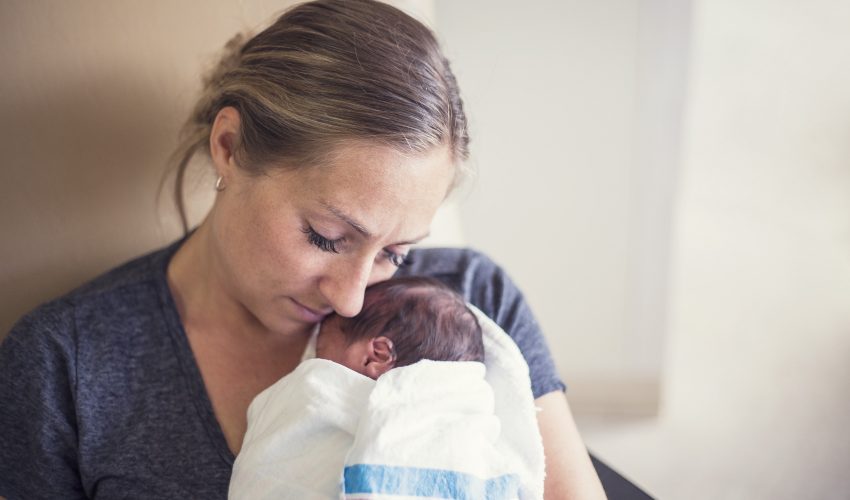Post Views: 2,072
Views No Comments
This July, patients, families, specialists, and advocacy organizations unite to raise more awareness of cleft and craniofacial conditions for National Cleft & Craniofacial Awareness & Prevention Month (NCCAPM). Throughout the entire month, organizations are having events worldwide to promote awareness and spread the word.
There are many types of congenital deformities that affect the child after birth. Cleft lips and cleft palates are among some of the most serious conditions. Both conditions are caused when the child’s lip or palate fail to form properly during pregnancy, creating openings in both areas.
A cleft lip is when the infant’s lip tissues don’t join together properly during pregnancy, resulting in an opening in the upper lip. This opening can be small and can also extend far upwards into the nose. A cleft palate is when the palate fails to form properly, and the child is born with a large opening in the roof of their mouth. These conditions can cause serious complications if left unchecked, such as feeding problems, speech impediments, hearing issues, and even lead to ear infections. Also, children that suffer from these conditions may experience problems with their teeth.
According to the Center for Disease Control (CDC), these orofacial clefts are very common compared to other birth defects. At least 2,650 babies are born with a cleft palate, and 4,440 babies are born with a cleft lip. Isolated orofacial clefts, which are the types of clefts that occur with no other major birth defects, are some of the most common types of clefts, making up around 50 to 80 percent of every case.
Researchers speculate that the causes are both genetic and environmental
The causes that lead to clefts in infants are unknown. Researchers theorize that a combination of genetic and environmental factors can lead to these deformities. In this sense, a mutation in the baby’s genes might be responsible for the improper formation of their lips or palate. Similarly, substances a mother comes into contact with during pregnancy can also lead to deformities in the fetus.
While causal evidence is inconclusive, the CDC revealed some important findings of the disease. For instance, mothers who smoke during pregnancy are much more likely to give birth to babies with orofacial clefts than mothers who didn’t smoke. Also, those who were diagnosed with diabetes prior to conceiving their babies are more likely to birth children with orofacial clefts. Lastly, women who use certain drugs, such as topiramate or valproic acid, to treat epilepsy during the first trimester of their pregnancy have a higher chance of bearing a child with cleft lip and with or without a cleft palate, compared to mothers who didn’t take these medicines.
Cleft lips and palates are relatively simple to treat, though the procedures and precautions will vary according to the type of cleft, its severity, and the child’s age. When it comes to cleft lip, the procedure to repair the defect should be performed during the first 12 months of life. For cleft palates, this procedure should be performed at least within the first 18 months of life. This is because, as children grow, they may need additional surgical procedures to correct their birth defects. These surgical procedures are also necessary. Not only does a cleft lip or palate affect a child’s physical appearance, they also affect a child’s breathing, hearing, and feeding. These surgeries will help improve the child’s overall condition.
However, while surgery can be used to correct cleft lips and palates, other orofacial clefts may require further services from a dentist or orthodontist, or from a speech therapist in order to recover completely.
Luckily, all children who undergo treatments for their clefts usually go on to lead healthy, normal lives. And, usually these surgeries rarely leave any scarring.
In this National Cleft and Craniofacial Awareness Month, there are several ways you can participate and help raise awareness of this disease, both online and offline.
One way is to sport the official color, purple. You can incorporate the ribbon some way into your uniform. If you also have some free time on the floor (which could be stretch in the nursing industry), talk with your cleft palate or craniofacial team to see if there’s anything YOU can do to help. You could also add the special Cleft Awareness Facebook frame to your profile, or sharing your stories of any encounters you’ve had with these forms of birth defects in your career. Share it with the ACPA Family Services so you can share it with millions across the country.
There are many other ways you can help in raising awareness of this disease. For more information, go to the ACPA Family Services and look into how you can help.
This July, patients, families, specialists, and advocacy organizations unite to raise more awareness of cleft and craniofacial conditions for National Cleft & Craniofacial Awareness & Prevention Month (NCCAPM). Throughout the entire month, organizations are having events worldwide to promote awareness and spread the word. Here’s how you can help!

